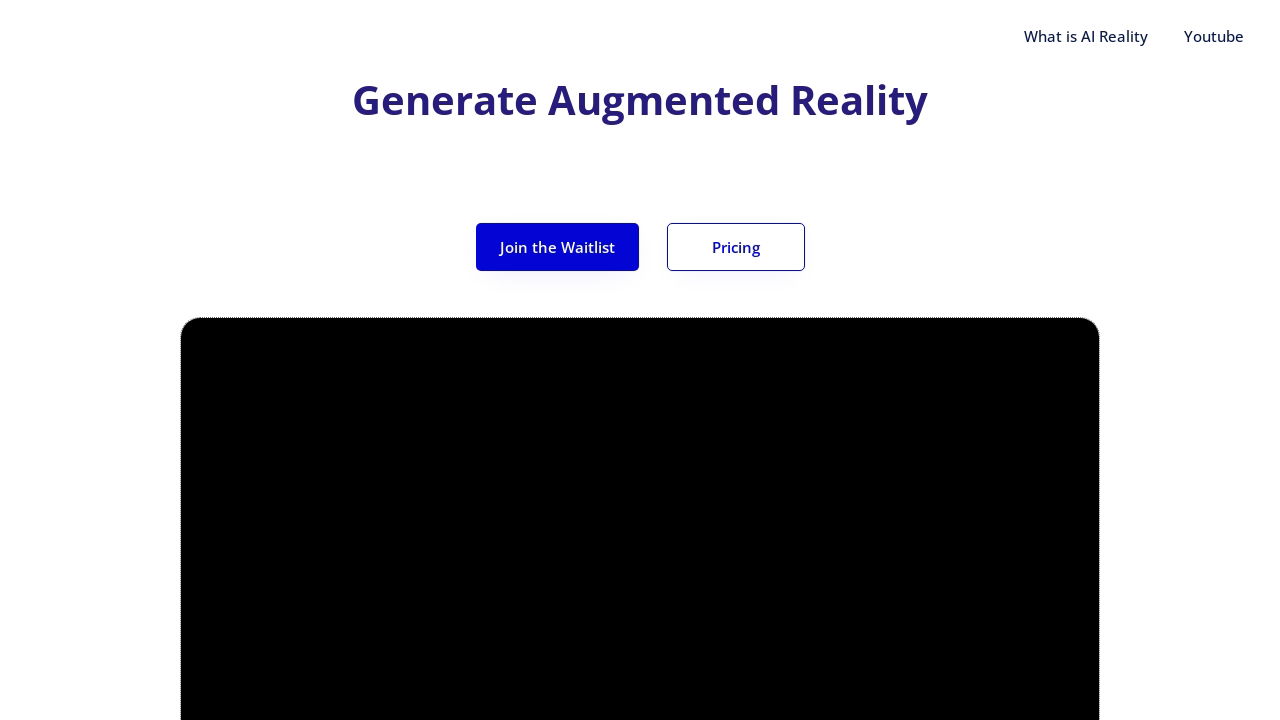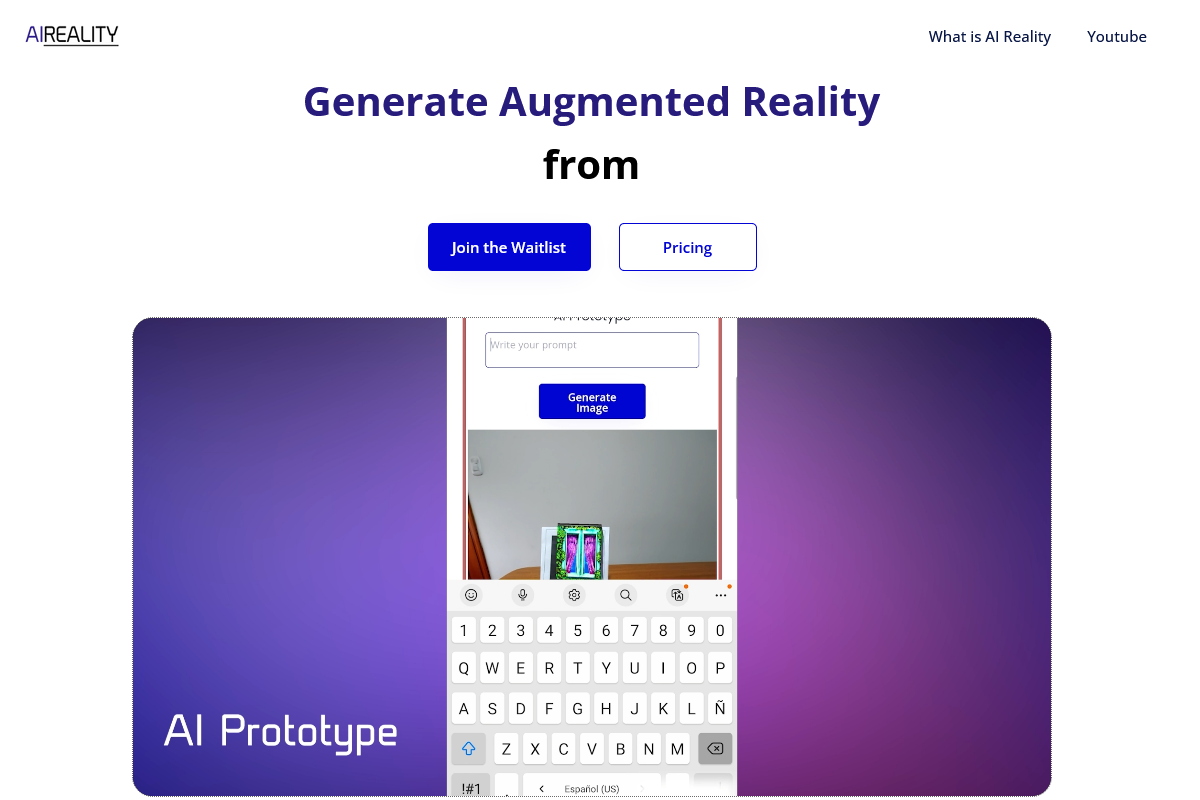Reality AI Lab is pushing the boundaries of artificial intelligence, creating technologies with the potential to revolutionize numerous industries. We explore cutting-edge research, focusing on applications that bridge the gap between the digital and physical worlds, impacting everything from healthcare and gaming to autonomous vehicles. Our mission is to develop responsible, ethical AI solutions that benefit humanity.
This exploration delves into the core technologies driving Reality AI Lab’s innovations, the challenges faced in our research, and the exciting possibilities that lie ahead. We’ll examine specific applications across diverse sectors, discuss ethical considerations, and offer a glimpse into our future plans, including ambitious flagship projects and collaborative partnerships.
Reality AI Lab: Shaping the Future with Artificial Intelligence

Reality AI Lab is a pioneering research institution dedicated to developing and deploying cutting-edge artificial intelligence technologies to address real-world challenges. Our vision is to create a future where AI empowers humanity, driving innovation and positive change across diverse sectors. This document provides an overview of the lab’s mission, research areas, applications, team, and future directions.
Introduction to Reality AI Lab
Reality AI Lab’s mission is to push the boundaries of AI research and development, focusing on creating robust, ethical, and impactful AI solutions. We envision a world where AI seamlessly integrates into our lives, improving efficiency, safety, and quality of life. Our research has the potential to significantly impact various industries, including healthcare, gaming, autonomous vehicles, and manufacturing, by providing innovative solutions to complex problems.
Core technologies employed by Reality AI Lab include deep learning, computer vision, natural language processing, and reinforcement learning. We utilize a multidisciplinary approach, combining expertise in computer science, engineering, mathematics, and domain-specific knowledge to tackle challenging research questions. Our methodologies emphasize rigorous experimentation, data-driven analysis, and ethical considerations throughout the research lifecycle.
Research Areas of Reality AI Lab

Reality AI Lab focuses on three key research areas: AI-driven drug discovery, real-time 3D environment simulation, and explainable AI (XAI) for autonomous systems. These areas represent significant challenges and opportunities in the field of AI.
While each area presents unique challenges – data scarcity in drug discovery, computational complexity in 3D simulation, and interpretability issues in XAI – they share a common thread: the need for innovative algorithms and robust data management strategies. Successfully addressing these challenges will lead to significant advancements in their respective fields.
AI-Driven Drug Discovery Research Project Proposal
This project aims to develop a deep learning model for predicting the efficacy of drug candidates for Alzheimer’s disease. The methodology will involve training a convolutional neural network (CNN) on a large dataset of molecular structures and their corresponding biological activity. Expected outcomes include improved prediction accuracy compared to existing methods and the identification of novel drug candidates for further investigation.
Applications of Reality AI Lab’s Technologies
Reality AI Lab’s technologies offer transformative potential across numerous sectors. Here are some examples of their applications in healthcare and gaming, along with a discussion of ethical implications in autonomous vehicles.
| Application | Description | Benefits | Challenges |
|---|---|---|---|
| AI-powered diagnostics | Utilizing computer vision to analyze medical images (X-rays, CT scans) for faster and more accurate disease detection. | Improved diagnostic accuracy, reduced wait times, earlier intervention. | Ensuring data privacy and security, addressing algorithmic bias. |
| Personalized medicine | Developing AI models to predict individual patient responses to different treatments. | Tailored treatment plans, improved patient outcomes, reduced side effects. | Data availability and quality, model interpretability and explainability. |
| Robotic surgery assistance | Employing AI to enhance the precision and efficiency of robotic surgery. | Minimally invasive procedures, faster recovery times, reduced complications. | System reliability and safety, integration with existing surgical workflows. |
| Drug discovery and development | Using AI to accelerate the identification and development of new drugs. | Reduced development time and costs, improved drug efficacy and safety. | Data availability and quality, model validation and regulatory approval. |
Revolutionizing the Gaming Industry:
- Creating more realistic and immersive game environments using real-time 3D simulation.
- Developing AI-powered non-player characters (NPCs) with advanced decision-making capabilities.
- Personalizing gameplay experiences based on individual player preferences and skill levels.
- Generating dynamic and unpredictable game events through reinforcement learning.
Ethical Implications in Autonomous Vehicles: The use of AI in autonomous vehicles raises significant ethical concerns regarding accident liability, algorithmic bias, and data privacy. Robust ethical frameworks and regulatory guidelines are crucial to ensure responsible development and deployment of this technology.
Team and Infrastructure of Reality AI Lab
Reality AI Lab’s success depends on a highly skilled and collaborative team. The organizational structure prioritizes interdisciplinary collaboration and knowledge sharing.
| Role | Responsibilities | Required Skills | Reporting To |
|---|---|---|---|
| Chief Scientist | Oversees all research activities, sets research direction. | Extensive AI research experience, leadership skills. | CEO |
| Research Scientists | Conduct research, develop AI models, publish findings. | Strong programming skills, expertise in specific AI areas. | Chief Scientist |
| Data Scientists | Collect, clean, and analyze data, build data pipelines. | Data mining, statistical modeling, big data technologies. | Chief Scientist |
| Software Engineers | Develop and maintain software infrastructure, deploy AI models. | Software development, cloud computing, DevOps. | Head of Engineering |
The necessary infrastructure includes high-performance computing clusters, specialized hardware for deep learning, and access to large datasets. Software infrastructure includes cloud-based platforms, version control systems, and collaborative development tools. Attracting top talent requires competitive salaries, benefits packages, and opportunities for professional development and collaboration with leading researchers.
Future Directions for Reality AI Lab

Future research directions will focus on emerging technologies such as quantum computing, neuromorphic computing, and federated learning. These advancements will enable the development of even more powerful and efficient AI systems.
Flagship Project: AI-Powered Personalized Healthcare Platform
Over the next five years, Reality AI Lab will focus on developing a comprehensive AI-powered personalized healthcare platform. This platform will integrate various AI technologies to provide patients with personalized treatment plans, preventative care recommendations, and continuous health monitoring.
Reality AI Lab’s focus is on advanced simulations, but sometimes even the most cutting-edge tech needs a bit of everyday setup. For example, if you’re printing out research results, you’ll need to get your printer online; check out this guide for canon ts3420 wifi setup if you’re using that model. Back to the lab, though – we’re currently working on improving the realism of our virtual environments.
Potential Partnerships and Collaborations: Reality AI Lab will actively seek partnerships with pharmaceutical companies, healthcare providers, technology companies, and research institutions to accelerate the development and deployment of its technologies.
Illustrative Example: A Simulated Scenario
Imagine a scenario where a wildfire is raging through a national park. Reality AI Lab’s real-time 3D environment simulation, coupled with advanced AI algorithms, is used to predict the fire’s spread and identify optimal locations for deploying firefighting resources. The simulation displays a detailed 3D model of the park, showing the fire’s progression in real-time, with overlaid heat maps indicating intensity.
Firefighters, using augmented reality headsets, see this information superimposed on their real-world view, enabling them to make informed decisions and effectively contain the fire, minimizing damage and saving lives. The simulation also models the impact of different firefighting strategies, allowing for rapid optimization and improved response.
Closing Summary
Reality AI Lab represents a significant leap forward in the field of artificial intelligence. By combining innovative research with a commitment to ethical development, we aim to create a future where AI enhances human capabilities and solves some of the world’s most pressing problems. The potential impact of our work is vast, and we are excited to continue pushing the boundaries of what’s possible.
Join us as we explore the evolving landscape of reality-altering AI.
FAQ Guide
What makes Reality AI Lab unique?
Reality AI Lab is pushing the boundaries of AI, exploring cutting-edge applications. Sometimes, though, even the most advanced systems need a break; if you’re wondering about the accessibility of other AI tools, check if is chatgpt down right now before proceeding with your Reality AI Lab project. Getting back to Reality AI Lab, their focus on ethical AI development is truly impressive.
Our focus on bridging the gap between the real and virtual worlds through responsible AI development sets us apart.
How does Reality AI Lab ensure ethical AI practices?
Reality AI Lab is pushing the boundaries of AI applications, and one exciting area is logistics. Think about how AI could optimize drone delivery routes – check out this article on the potential of drone delivery Canada stock to see the market impact. Ultimately, advancements in areas like this will feed back into Reality AI Lab’s research, helping them build even smarter systems.
We have an embedded ethics committee and rigorous review processes throughout our research and development lifecycle.
What kind of funding does Reality AI Lab receive?
Our funding model is diverse, encompassing government grants, private investment, and corporate partnerships.
Where is Reality AI Lab located?
Our main facility is located in [Insert Hypothetical Location], with satellite offices planned for key global locations.
